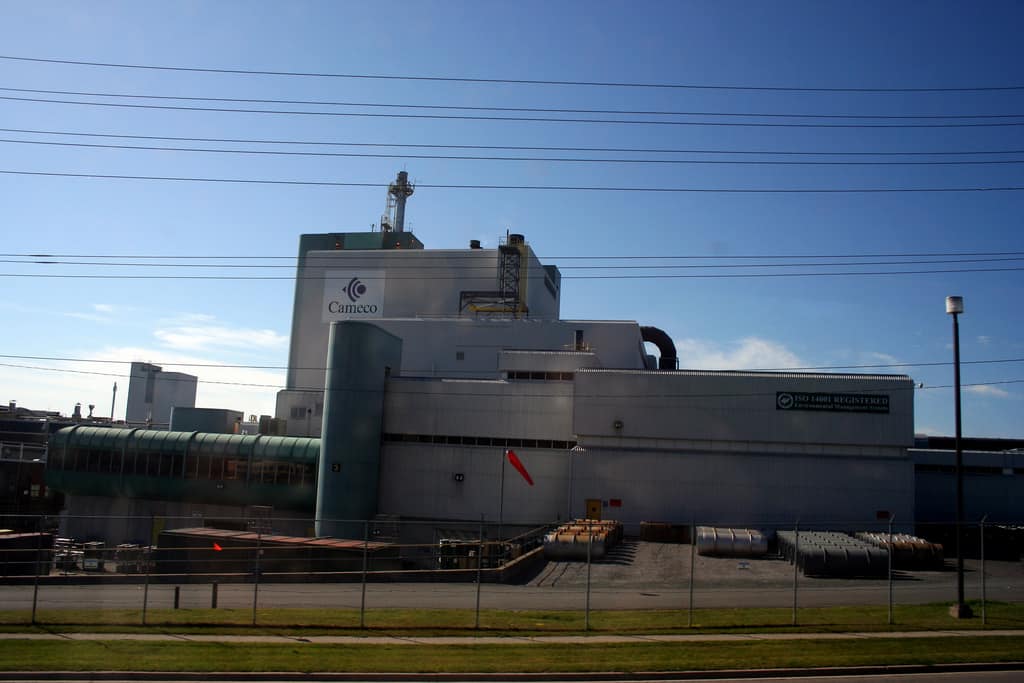Cameco Corp. (TSX:CCO)(NYSE:CCJ) is unlike any other company. As the world’s largest producer of uranium, Cameco is at a significant advantage over other uranium producers, but, faced with a weak demand for uranium, the company has had to deal with operational and production efficiencies, cost cuts, and burning through cash.
What happened to the uranium market?
Back in 2011, uranium was trading at upwards of US$70 per pound, and nuclear power was viewed as an inexpensive, safe, and clean method to produce energy. That all changed when an earthquake hit Japan and a subsequent tsunami damaged the reactor at Fukushima.
The Fukushima disaster was the trigger event that effectively dried up all demand for nuclear power and, by extension, uranium. Countless projects were put on hold, and several existing facilities around the world, including all reactors in Japan, were shuttered.
While uranium demand remains weak, there are several reasons investors should consider Cameco.
Long-term prospects for uranium remain strong
Demand for uranium is beginning to pick up. Over the past two years, several new reactors have come online, and there are over 60 reactors under construction around the world. Additionally, over 100 reactors are in the planning phase of development.
Those new developments tend to be clustered in areas of the world where massive infrastructure spending and growth are underway. China has added 13 new reactors in the past two years, and another 20 plants are under construction; China plans to be the third-largest generator of nuclear power in the world by the end of the decade.
India and South Korea have upwards of 30 reactors planned and nine currently under construction. India also has countless other proposals in the planning phase, which could double the number of reactors in the country over the next two decades.
For Cameco, this presents a huge opportunity. As the largest producer of uranium, Cameco is likely to provide a fair amount of the uranium for these new reactors.
The supply gut will shrink, and revenues will rise
When demand for uranium plummeted, uranium suppliers like Cameco were left mining a product that was no longer in demand and dropping in price. This led to a glut of inventory among those suppliers, who were facing increased costs and falling revenues.
Cameco’s response to the fall in prices was not unlike what gold producers did when the precious metal started its own epic drop in 2011. Cameco reined in costs, prioritized certain facilities over others, and even shuttered some of its least-efficient facilities until such time that they are no longer cost prohibitive to operate.
Tax issues
Critics of Cameco often point to the longstanding case the company has with the Canada Revenue Agency (CRA). The root of the dispute stems from a taxation matter. A decision on the matter is due later this year, which, in the worst scenario, could see Cameco stuck with a multi-billion-dollar bill to the CRA.
Irrespective of the outcome of that case, Cameco’s tax issues are well known and likely already factored in to the current stock price, which trades just under $15.
Another often disregarded point relating to Cameco is the dividend. The quarterly dividend of $0.10 per share provides a yield of 2.67%, which is better than most would have expected from a uranium producer in the current market. If anything, the dividend provides investors waiting for the inevitable rise in uranium prices some solace and opportunity to increase their holdings
In my opinion, Cameco represents a great long-term opportunity for investors. While the stock may still drop before the bottom hits, the long-term prospects are bright.







